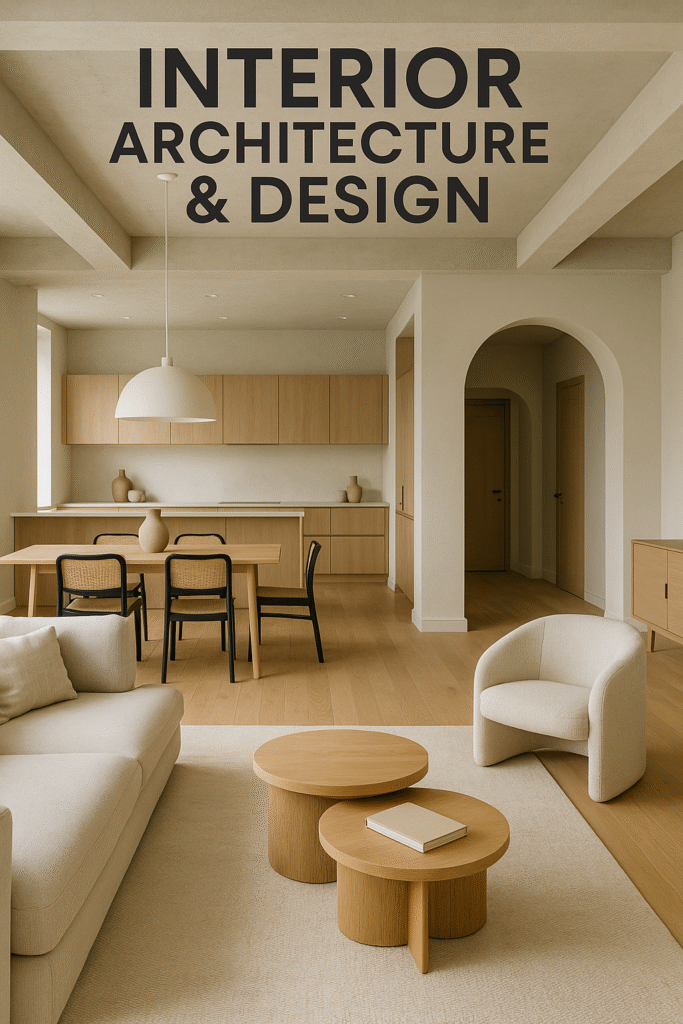Interiors, finishes, lighting, furniture integration.

Interiors Reimagined: Finishes, Lighting, and Furniture in Harmony
Designing interiors today is no longer about simply filling a space with furniture and decorative accents. It is about creating experiences—environments that feel intentional, functional, and visually compelling. At the heart of this process are three essential ingredients: finishes, lighting, and furniture. When seamlessly integrated, these elements elevate an interior from ordinary to extraordinary.
Finishes: Setting the Tone
Finishes are the tactile and visual language of interiors. They shape first impressions and influence how a space feels on a sensory level. From sleek marble countertops to rustic timber beams, finishes establish mood, depth, and style.
Neutral palettes remain timeless, acting as a canvas on which furniture and art can stand out. Yet, bold finishes—such as textured walls, patterned tiles, or brushed metals—can inject personality and vibrancy. Importantly, designers must balance durability with beauty, ensuring that high-traffic zones receive practical finishes while intimate areas embrace warmth and comfort.
“The right finish is more than surface—it’s the identity of the space.”
Example: At The Bulgari Hotel in Milan, polished stone, dark woods, and rich textiles are layered with impeccable craftsmanship. These finishes don’t just define luxury—they create a tactile identity that resonates with the brand’s Italian heritage.
Lighting: The Invisible Designer
Lighting is arguably the most powerful yet underrated design tool. It has the ability to transform finishes, highlight textures, and shift the mood of a room with a single adjustment.
A layered approach to lighting—ambient, task, and accent—ensures both function and atmosphere. Ambient lighting provides the foundation, task lighting supports daily activities, and accent lighting introduces drama and focus. Natural light also plays a crucial role: expansive windows, clerestories, or skylights invite daylight in, fostering well-being while reducing energy use.
Example: At Aman Tokyo, lighting is curated like art. Subtle floor-level LEDs, shoji-inspired lanterns, and dramatic ceiling fixtures work in harmony to celebrate natural finishes like wood and stone. The interplay of shadow and light brings a sense of calm, echoing the Japanese philosophy of balance.
Here’s a curated moodboard-style set of high-resolution images from Aman Tokyo, focusing on their lighting, finishes, and furniture integration.
Furniture is where human interaction meets architectural intent. It defines scale, guides circulation, and provides comfort. A modular sofa can transform an open-plan living area into flexible gathering zones, while bespoke cabinetry can blur the line between architecture and furniture.
Integration is key. Furniture must resonate with the chosen finishes—think a warm oak dining table complementing pale stone floors or sleek chrome chairs echoing polished concrete. The relationship between proportions, materials, and finishes ensures that furniture feels like part of the architecture, not an afterthought.
Lighting should never be an afterthought. Instead, it must be considered in tandem with finishes and furniture to create a cohesive, adaptable environment.
Example: The Four Seasons Resort in Bali at Sayan integrates hand-carved teak furniture that complements lush greenery and natural stone finishes. The furniture is not just functional—it anchors the guest experience in Balinese culture.
Integration: The Art of Cohesion
The true magic of interior design lies in integration. A textured wall may be accentuated by directional lighting, while a carefully placed chair might influence how natural light flows into a space. Collaboration between designers, architects, and lighting consultants ensures that every decision builds toward one cohesive story.
When finishes, lighting, and furniture work together, interiors transcend aesthetics. They become living environments—adaptive, beautiful, and deeply human.
Example: The Mandarin Oriental in Barcelona epitomizes integration. Its interiors combine sleek modern finishes with custom-designed furniture and a lighting strategy that highlights both public and private spaces. The result is an environment that feels contemporary yet rooted in cultural elegance.
✨ The next time you step into a well-designed space, look closely. The harmony you feel isn’t accidental—it’s the seamless integration of details that whisper rather than shout.

Linda Nair
ABOUT
Linda Nair
writes sustainability‑first, water‑wise home upgrade guides.
Linda is a contriburo to https://dailyarchitectural.com/ specialising in water‑efficiency consultant who helps municipalities and builders meet performance targets. She covers low‑flow fixtures, graywater, leak detection, and rebate programs so projects save water without sacrificing comfort.
Article Links
Low‑Flow Showerheads: Do They Actually Feel Good?
Pros & Cons of Whole‑Home Leak Detection
Find Rebates for Efficient Fixtures in Your Area
